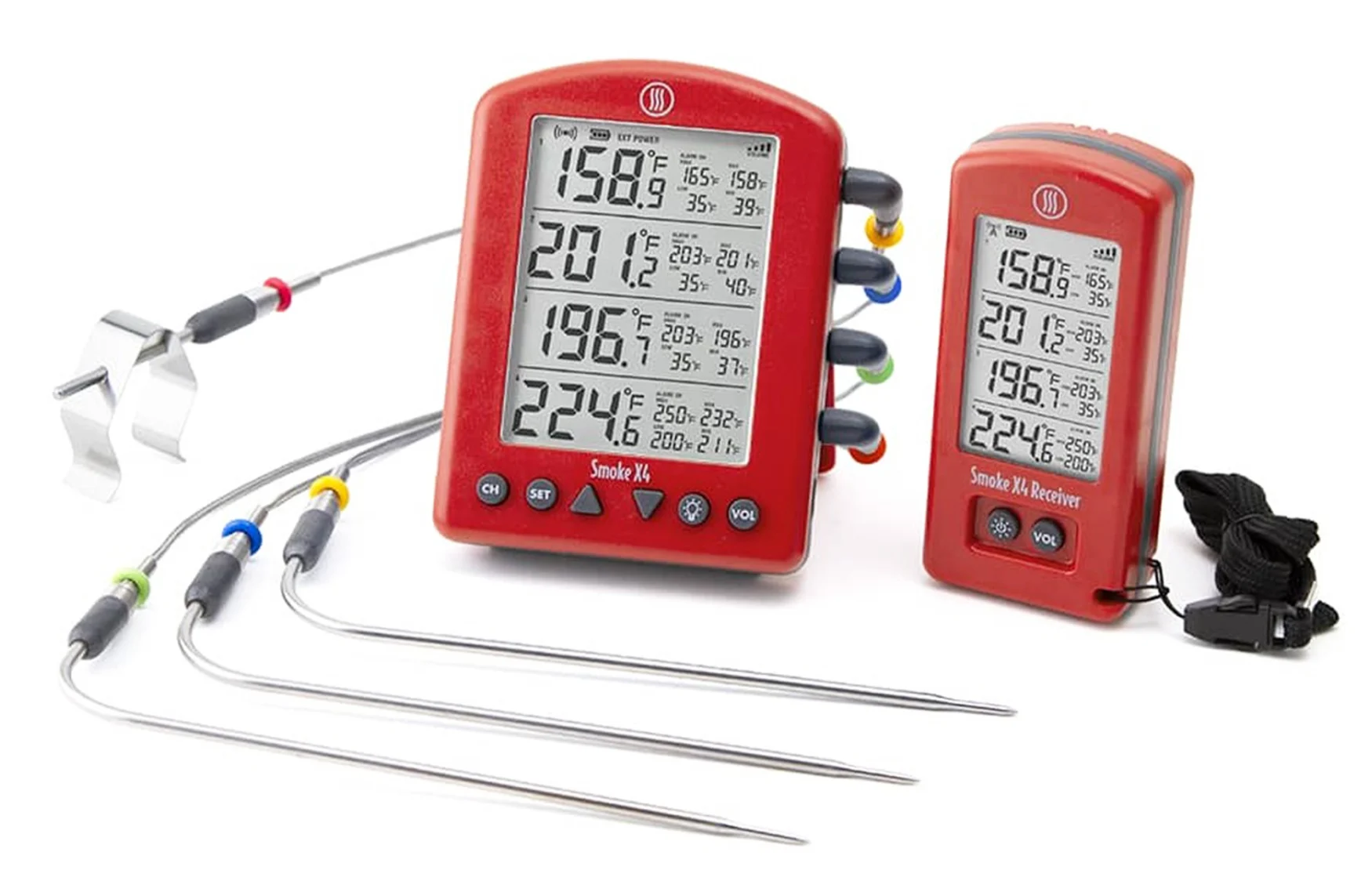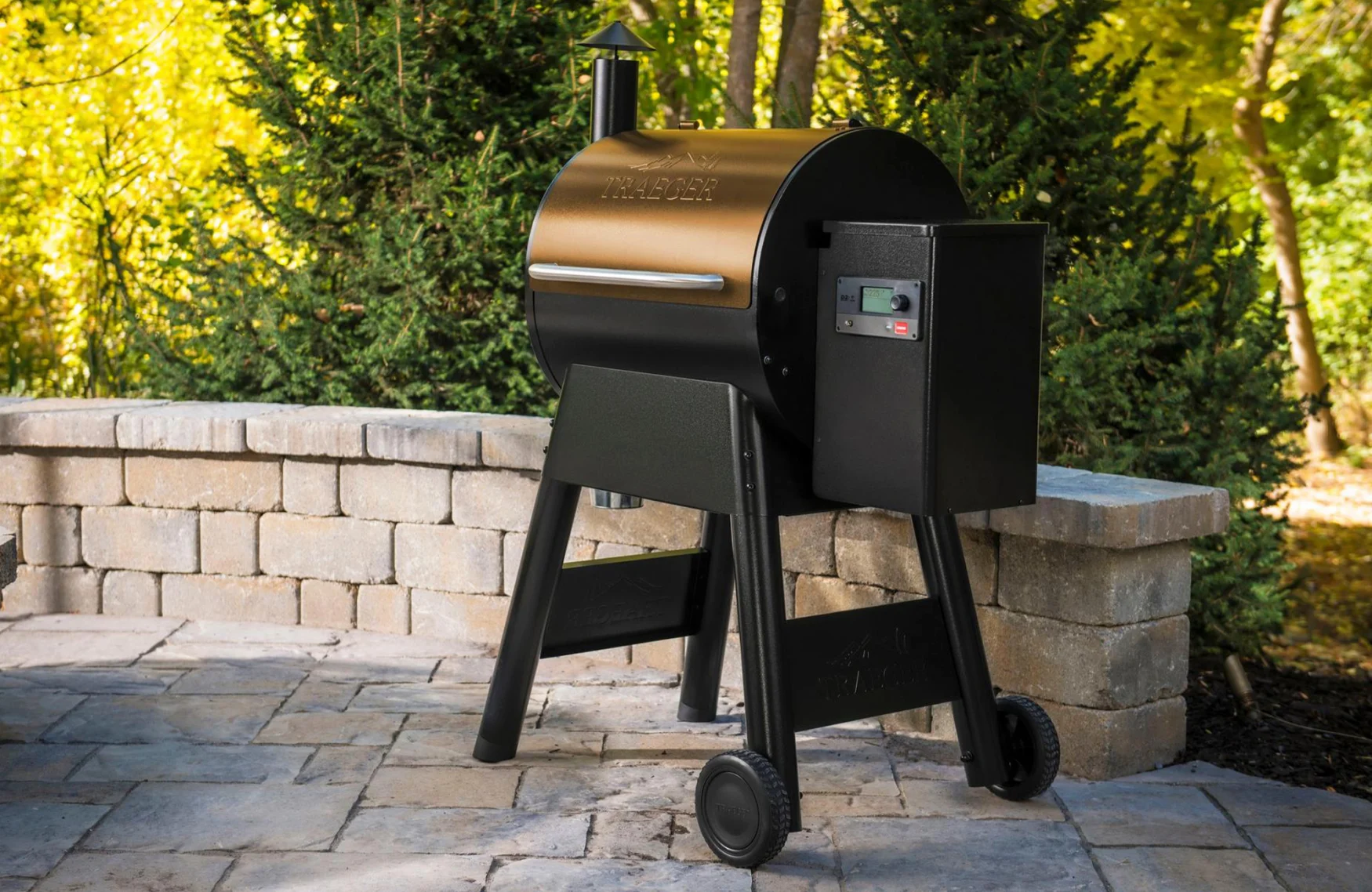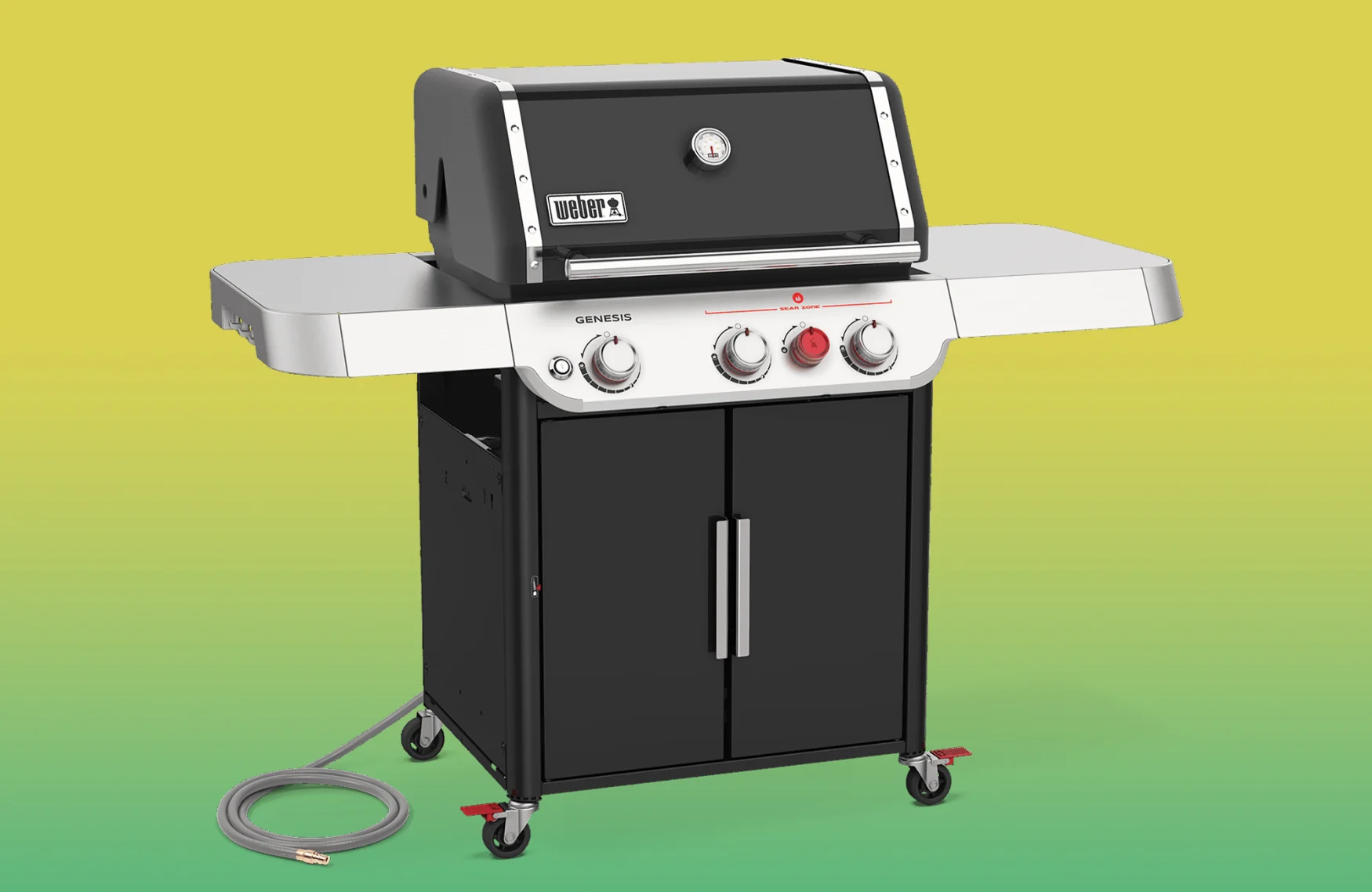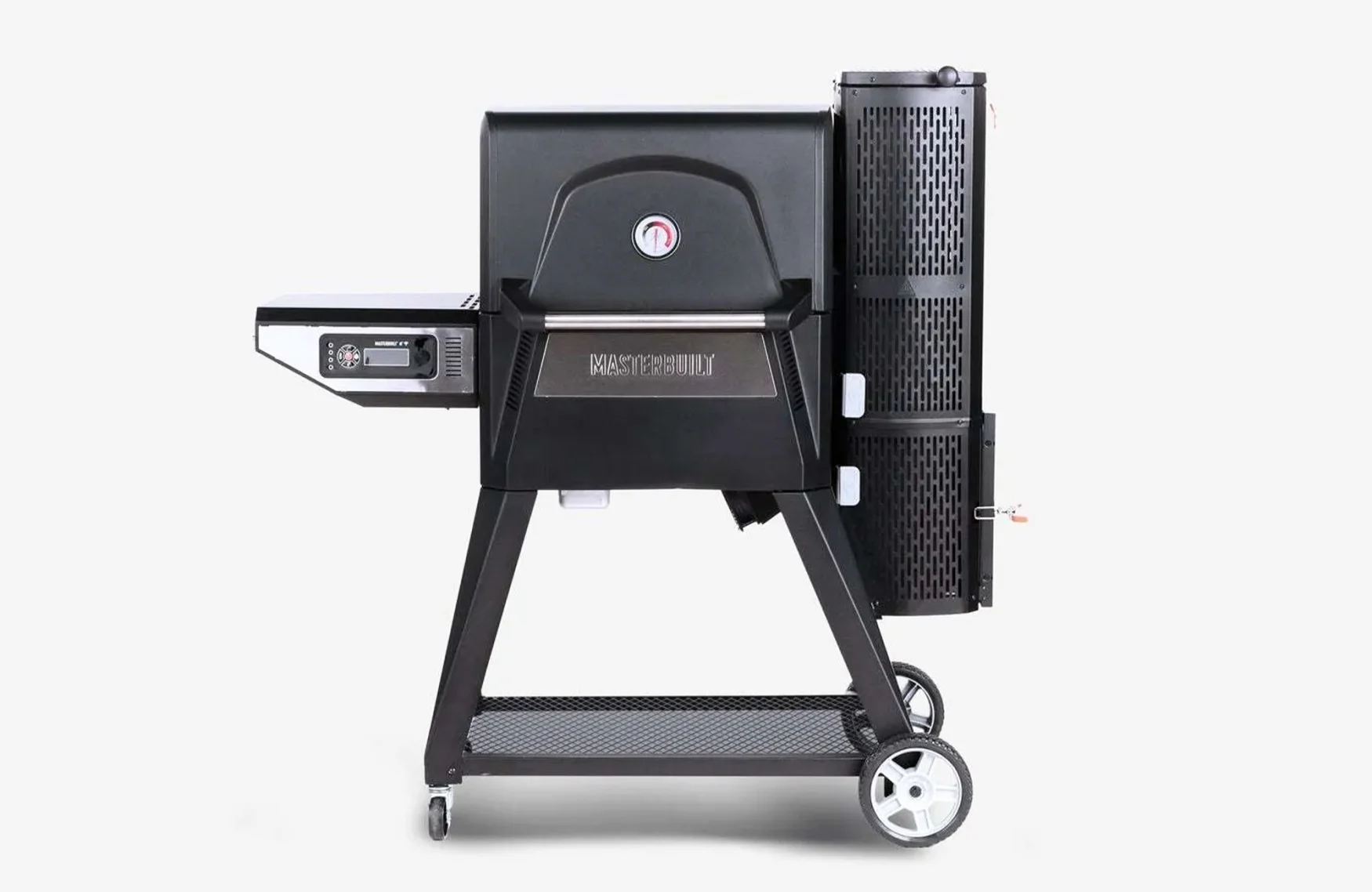How to buy a smart grill
[ad_1]
Smart grills are expensive. Companies definitely make you pay a premium for the conveniences that some WiFi can afford. When it comes to pellet grills, you’ll likely be paying upwards of $1,000. The same goes for gasoline models that have wireless connectivity. For this reason, it’s important to consider what type of cooking you plan to do and how often you plan to do it when you go shopping. Cooking burgers for the warm-weather holidays or cooking steaks occasionally? Dropping that much money could be excessive. But if you prefer to cook outdoors most of the year and are ready to expand your culinary skills to include slow and slow smoking, you’re in the right place.
The real benefit of a smart grill is being able to monitor your food without having to stand next to it all the time. Most models allow you to monitor temperatures and offer some degree of cooking guidance. There is convenience for both beginners and experienced cooks, especially for things that take several hours to complete. However, if you’re happy with the Weber Kettle or Big Green Egg, there are ways to get smart grilling features without making an expensive purchase.
Smart Grill Alternatives

thermoworks
You can get the basic functionality of a smart grill for $100 or less. All you really need to monitor temperatures from a short distance is an RF thermometer that has meat probes. For its precision and ease of use, I prefer the ThermoWorks Smoke line. The cheapest option is $99 and comes with a food probe and a room temperature probe. For $169, you can upgrade to the longer-range two-probe Smoke X2 and the four-probe Smoke X4 is $199. All of these let you monitor things from the inside and offer the ability to set high and low temperature alarms for audible alerts. ThermoWorks also sells an add-on accessory that can add WiFi to the entry-level Smoke model, allowing you to send stats to your phone.
Of course, those devices only monitor the temperature. They do nothing to help you adjust the heat levels. For that, ThermoWorks built Billows. It is a temperature controlled fan that eliminates the need to manually open/close the vents on a charcoal or wood burning smoker or grill. You’ll need a ThermoWorks controller to use it, like the $239 Signals four-probe unit. Signals is more expensive than the Smoke models, but it has built-in Wi-Fi, so it works with your phone right out of the box.
If WiFi and step-by-step guidance are your thing, the Weber Connect Smart Grilling Hub is a great option. This adds just about every smart feature to any grill. Weber’s app not only offers tips on preparing food, but also guides you through the entire process, from flipping to wrapping to resting. Timers let you know when the next step is coming up, and the hardware/software combo can even estimate when cooking will be complete. That last bit is useful when smoking things like brisket, which can take anywhere from 8 to 12 hours. The Hub can accommodate up to four probes, so you can monitor multiple foods and grill temperature through the simple built-in interface.
If having crisscross wires inside your grill sounds like a nuisance, and it very well can be at times, there are wireless options available for temperature control. My product of choice is the Meater Plus ($99.95 and up) which can do double duty with a probe. It is completely wireless and is equipped with two temperature sensors: one for the internal temperature of the food and one for the ambient temperature of the grill at the other end. The Meater app has a guided cooking system for step-by-step instructions and an estimator algorithm predicts how long your food will take to cook and rest. Meater Plus also has a Bluetooth repeater built into the charger that extends the range up to 165 feet.
Pellet barbecues

bring
When it comes to smart grills, garden stoves that burn wood pellets are some of the most popular models. Basically, a heating element at the bottom of the grill ignites compressed wood which is fed into the fire pot via an auger. A fan operated controller on the grill regulates the size of the flame and the overall temperature. Of course, this is all done automatically once you set the temperature. Plus, WiFi-enabled pellet grills let you monitor and adjust temperatures from your phone, so you can stay inside and entertain your guests.
A key advantage of pellet grills is their versatility. Most of them can handle low, slow cooking as low as 180 degrees Fahrenheit, as well as scorching temperatures of 600 degrees and above. This gives you the ability to cook everything from brisket, ribs, and pork loin to burgers, pizza, and steaks. Some even have a slider that allows you to sear over the firebox flame. These racks allow you to “set it and forget it” for long cooks, and even for short cooks, they don’t require much attention other than flipping or braising.
There are more affordable smart pellet grills on the market, but for the combination of hardware and software performance, Traeger and Weber are the best options. Traeger has a variety of models, almost all equipped with WiFi, starting at $800. The company’s completely redesigned Timberline series is basically an outdoor kitchen. It can accommodate a variety of accessories to expand its capabilities and there’s a built-in induction burner on the side for making sauces, cooking garnishes and searing. The cooking chamber is double-walled insulated and the grill comes with a set of Meater wireless thermometers that connect to your touchscreen controller. However, all the upgrades to the Timberline will set you back a whopping $3,500. And that’s for the smallest size.
For 2023, Trager has also redesigned the Ironwood series, giving it many of the same updates that the new Timberline offers. There’s no induction burner, wood shelving, storage, or double-wall construction, but touchscreen controls, new fixtures (including a modular rail system), and most importantly, the ash management system and The company’s redesigned grease are all here. The Ironwood has an open bottom shelf and a large side shelf in place of the Timberline’s burner. And while it doesn’t ship with Meater probes, this grill supports them if you buy them separately ($230 for a two-pack). The lack of high-end features makes the Ironwood much more affordable, starting at $1,800.
With the Traeger app, you get access to a huge library of recipes, all of which can be sent to the grill so you don’t have to dial up the settings. You also get step-by-step instructions, timers, food probe temperatures, and the ability to activate special modes. All of that is in addition to remote control and monitoring of the grill’s temperature. The software is compatible with all of the company’s WiFi-enabled models, including older ones, so you don’t need the newest Timberline or Ironwood to take advantage of what the app has to offer.
With Weber’s SmokeFire grill, you get the connectivity and convenience that many pellet grills can offer. There’s only one model, but it comes in two sizes to suit your needs, and the company has perfected it with multiple versions since the original debuted in 2020. Weber Connect is a handy culinary companion that not only controls the grill, but also provides guided details for each step in the cooking process. One of its key features is the Estimated Time of Completion, which helps you know when your food will be ready. It comes in handy when you have a hungry crowd asking how your pulled pork sandwiches are coming along. During my tests, I was also impressed with the amount of smoky flavor that SmokeFire imparted to food. Weber’s pellet grill doesn’t have a solid plate covering the fire pot like some Traeger models, so smoke moves around the cooking chamber differently.
gas grills

Engadget
However, the smart choices are not limited to pellet grills. If you don’t need to cook at a low temperature, a propane or natural gas model might be a better option. In 2021, Weber added its Connect smart grill deck to its gas grills, offering three- and four-burner configurations, some of which also feature a side burner for additional cooking space. Similar to SmokeFire, Weber Connect not only lets you monitor food and grill temperatures from a comfortable chair, it can guide you through the process and provide time updates. You still have to manually adjust the burners, but the Weber app can alert you when you’re running low on fuel (propane models).
Other types of smart grills

Masterpiece
Both pellet and gas grills have their merits, but some people prefer the proven flavor of charcoal when cooking outdoors. While purchasing one of the accessories mentioned above will likely accomplish what you’re looking for for a kettle or kamado-style grill you already own, there are some smart charcoal grills that offer a degree of connectivity for your cooks.
For fans of kamado-style ceramic grills, Kamado Joe recently announced the Konnected Joe. Silly spelling aside, the unit addresses two key issues with these types of grills: lighting the charcoal and regulating the temperature. To help with the former, the company installed an ignition system at the bottom of the cook chamber that ignites the fuel with the push of a button. The Konnected Joe is also equipped with built-in smart grilling features that help you keep temperatures consistent while you can control food and grill temperatures remotely via an app. Before, if you wanted smart features on a Kamado Joe grill, you had to invest in the iKammand plugin. The big caveat here is that I haven’t tried one yet. They were announced in March, but won’t ship until June (although pre-orders are open). At $1,699, this grill is another significant investment, though that figure is on par with the company’s other models that lack the added features that connectivity brings.
[ad_2]